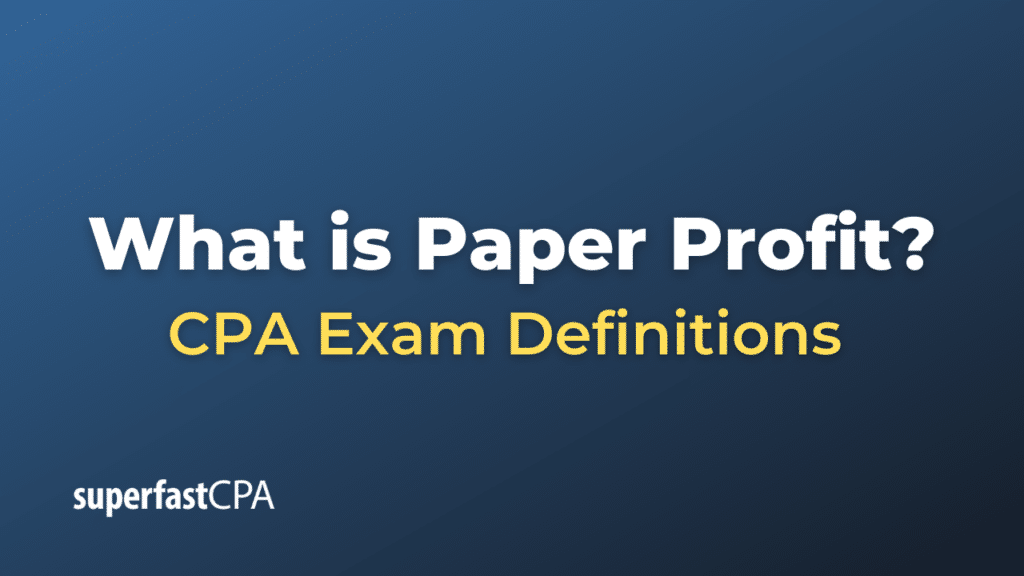Paper Profit
Paper profit, also known as unrealized gain, refers to the hypothetical profit an investor has made on an investment, based on its current market value, before it is sold. It is the increase in value of an investment from the price it was purchased at to its current market price.
However, a paper profit only exists “on paper” because the profit isn’t realized until the asset is actually sold. Until that point, the profit is merely an estimate based on the asset’s current market value, which can fluctuate. If the market price drops before the investor sells the asset, the paper profit could decrease or even turn into a loss.
For example, let’s say an investor buys 100 shares of a company’s stock for $10 each, totaling a $1,000 investment. If the price per share rises to $15, the investment’s value would increase to $1,500. Therefore, the investor has a paper profit of $500. However, this profit isn’t realized until the investor sells the shares. If the share price drops to $8 before the investor sells, the paper profit would turn into a paper loss.
It’s important to remember that a paper profit is not cash in hand and does not guarantee a real profit until the investment is sold.
Example of Paper Profit
Imagine that you purchase 100 shares of a company named FutureTech Inc. for $50 per share. The total cost of this investment is $50 * 100 = $5,000.
After a year, FutureTech Inc. performs exceptionally well and its stock price increases to $70 per share. At this point, the market value of your investment is $70 * 100 = $7,000. This means you have a paper profit of $7,000 (the current market value of the investment) – $5,000 (the original cost of the investment) = $2,000.
However, it’s crucial to note that this is an unrealized gain, or paper profit. It isn’t actual cash in your pocket until you sell the shares.
If, after another few months, the stock price of FutureTech Inc. falls to $40 per share, the market value of your investment becomes $40 * 100 = $4,000. In this case, your paper profit turns into a paper loss of $1,000, since the market value of your investment ($4,000) is now less than what you originally paid for it ($5,000).
So, this illustrates that paper profit is a theoretical profit that exists “on paper,” and can fluctuate with the market value of the investment. It only becomes a real, realized gain when the investment is actually sold for a profit.












